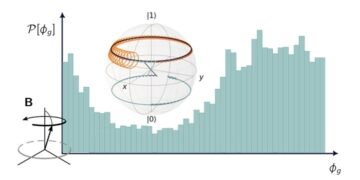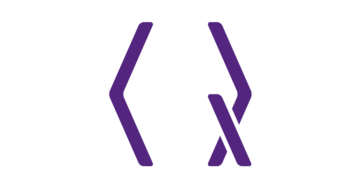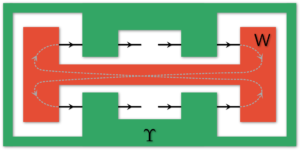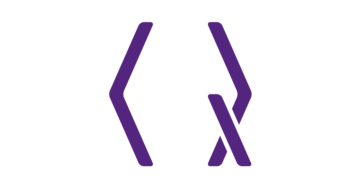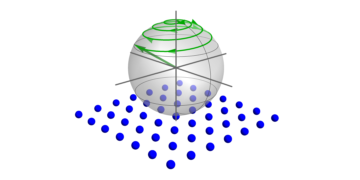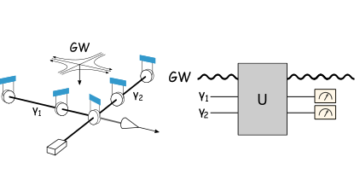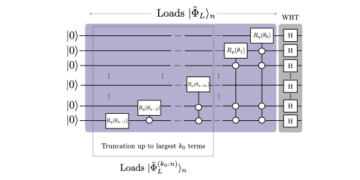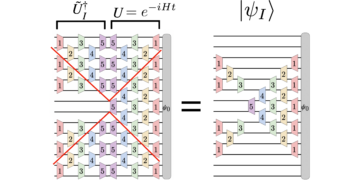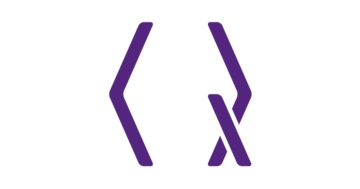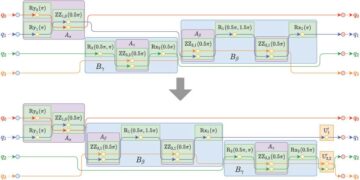Google Quantum AI, Santa Barbara, California 93117, USA
Find this paper interesting or want to discuss? Scite or leave a comment on SciRate.
Abstract
In this paper, I present a way to compile the surface code into two-body parity measurements (“pair measurements”), where the pair measurements run along the edges of a Cairo pentagonal tiling. The resulting circuit improves on prior work by Chao et al. by using fewer pair measurements per four-body stabilizer measurement (5 instead of 6) and fewer time steps per round of stabilizer measurement (6 instead of 10). Using Monte Carlo sampling, I show that these improvements increase the threshold of the surface code when compiling into pair measurements from $approx 0.2%$ to $approx 0.4%$, and also that they improve the teraquop footprint at a $0.1%$ physical gate error rate from $approx6000$ qubits to $approx3000$ qubits. However, I also show that the teraquop footprint of Chao et al’s construction improves more quickly than mine as physical error rate decreases, and is likely better below a physical gate error rate of $approx 0.03%$ (due to bidirectional hook errors in my construction). I also compare to the planar honeycomb code, showing that although this work does noticeably reduce the gap between the surface code and the honeycomb code (when compiling into pair measurements), the honeycomb code is still more efficient (threshold $approx 0.8%$, teraquop footprint at $0.1%$ of $approx 1000$).
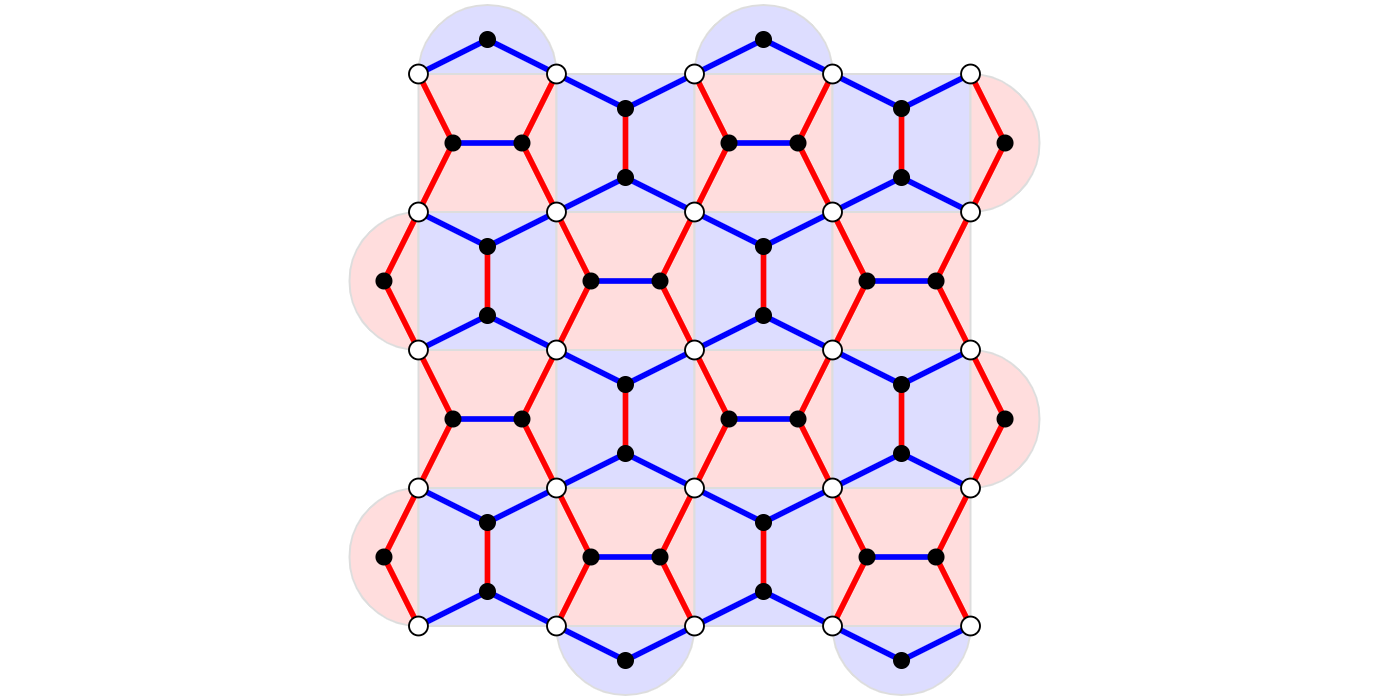
Featured image: A pentagonal tiling overlaid over a surface code, showing the qubit connections used by the construction in the paper to implement a surface code.
Popular summary
► BibTeX data
► References
[1] Miriam Backens, Simon Perdrix, and Quanlong Wang. A simplified stabilizer ZX-calculus. Electronic Proceedings in Theoretical Computer Science, 236: 1–20, January 2017. 10.4204/eptcs.236.1. URL https://doi.org/10.4204/eptcs.236.1.
https://doi.org/10.4204/eptcs.236.1
[2] Rui Chao, Michael E Beverland, Nicolas Delfosse, and Jeongwan Haah. Optimization of the surface code design for majorana-based qubits. Quantum, 4: 352, 2020. 10.22331/q-2020-10-28-352.
https://doi.org/10.22331/q-2020-10-28-352
[3] Bob Coecke and Ross Duncan. Interacting quantum observables: categorical algebra and diagrammatics. New Journal of Physics, 13 (4): 043016, 2011. 10.1088/1367-2630/13/4/043016.
https://doi.org/10.1088/1367-2630/13/4/043016
[4] Bob Coecke and Aleks Kissinger. Picturing quantum processes. Cambridge University Press, 2017.
[5] Niel de Beaudrap and Dominic Horsman. The ZX calculus is a language for surface code lattice surgery. Quantum, 4: 218, January 2020. 10.22331/q-2020-01-09-218. URL https://doi.org/10.22331/q-2020-01-09-218.
https://doi.org/10.22331/q-2020-01-09-218
[6] Nicolas Delfosse and Naomi H Nickerson. Almost-linear time decoding algorithm for topological codes. Quantum, 5: 595, 2021. 10.22331/q-2021-12-02-595.
https://doi.org/10.22331/q-2021-12-02-595
[7] A. G. Fowler, M. Mariantoni, J. M. Martinis, and A. N. Cleland. Surface codes: Towards practical large-scale quantum computation. Phys. Rev. A, 86: 032324, 2012. 10.1103/PhysRevA.86.032324. arXiv:1208.0928.
https://doi.org/10.1103/PhysRevA.86.032324
arXiv:1208.0928
[8] Craig Gidney. Stim: a fast stabilizer circuit simulator. Quantum, 5: 497, July 2021. ISSN 2521-327X. 10.22331/q-2021-07-06-497.
https://doi.org/10.22331/q-2021-07-06-497
[9] Craig Gidney. Data for “A Pair Measurement Surface Code on Pentagons”, June 2022a. URL https://doi.org/10.5281/zenodo.6626417.
https://doi.org/10.5281/zenodo.6626417
[10] Craig Gidney. Sinter source code on github. https://github.com/quantumlib/Stim/tree/main/glue/sample, 2022b.
https://github.com/quantumlib/Stim/tree/main/glue/sample
[11] Craig Gidney and Michael Newman. Benchmarking the planar honeycomb code. arXiv preprint arXiv:2202.11845, 2022. 10.48550/arXiv.2202.11845.
https://doi.org/10.48550/arXiv.2202.11845
arXiv:2202.11845
[12] Craig Gidney, Michael Newman, Austin Fowler, and Michael Broughton. A fault-tolerant honeycomb memory. Quantum, 5: 605, 2021. 10.22331/q-2021-12-20-605.
https://doi.org/10.22331/q-2021-12-20-605
[13] Matthew B Hastings and Jeongwan Haah. Dynamically generated logical qubits. Quantum, 5: 564, 2021. 10.22331/q-2021-10-19-564.
https://doi.org/10.22331/q-2021-10-19-564
[14] Clare Horsman, Austin G Fowler, Simon Devitt, and Rodney Van Meter. Surface code quantum computing by lattice surgery. New Journal of Physics, 14 (12): 123011, 2012. 10.1088/1367-2630/14/12/123011.
https://doi.org/10.1088/1367-2630/14/12/123011
[15] Adam Paetznick, Christina Knapp, Nicolas Delfosse, Bela Bauer, Jeongwan Haah, Matthew B Hastings, and Marcus P da Silva. Performance of planar floquet codes with majorana-based qubits. arXiv preprint arXiv:2202.11829, 2022. 10.48550/arXiv.2202.11829.
https://doi.org/10.48550/arXiv.2202.11829
arXiv:2202.11829
[16] Wikipedia. Cairo pentagonal tiling — Wikipedia, the free encyclopedia. https://en.wikipedia.org/wiki/Cairo_pentagonal_tiling, 2022. [Online; accessed 4-June-2022].
https://en.wikipedia.org/wiki/Cairo_pentagonal_tiling
Cited by
[1] David Aasen, Jeongwan Haah, Zhi Li, and Roger S. K. Mong, “Measurement Quantum Cellular Automata and Anomalies in Floquet Codes”, arXiv:2304.01277, (2023).
[2] Oscar Higgott and Nikolas P. Breuckmann, “Constructions and performance of hyperbolic and semi-hyperbolic Floquet codes”, arXiv:2308.03750, (2023).
[3] Hector Bombin, Chris Dawson, Terry Farrelly, Yehua Liu, Naomi Nickerson, Mihir Pant, Fernando Pastawski, and Sam Roberts, “Fault-tolerant complexes”, arXiv:2308.07844, (2023).
[4] Matt McEwen, Dave Bacon, and Craig Gidney, “Relaxing Hardware Requirements for Surface Code Circuits using Time-dynamics”, arXiv:2302.02192, (2023).
[5] Alex Townsend-Teague, Julio Magdalena de la Fuente, and Markus Kesselring, “Floquetifying the Colour Code”, arXiv:2307.11136, (2023).
[6] Matthew J. Reagor, Thomas C. Bohdanowicz, David Rodriguez Perez, Eyob A. Sete, and William J. Zeng, “Hardware optimized parity check gates for superconducting surface codes”, arXiv:2211.06382, (2022).
[7] Andreas Bauer, “Topological error correcting processes from fixed-point path integrals”, arXiv:2303.16405, (2023).
[8] Jiaxin Huang, Sarah Meng Li, Lia Yeh, Aleks Kissinger, Michele Mosca, and Michael Vasmer, “Graphical CSS Code Transformation Using ZX Calculus”, arXiv:2307.02437, (2023).
[9] Hector Bombin, Daniel Litinski, Naomi Nickerson, Fernando Pastawski, and Sam Roberts, “Unifying flavors of fault tolerance with the ZX calculus”, arXiv:2303.08829, (2023).
[10] Nicolas Delfosse and Adam Paetznick, “Spacetime codes of Clifford circuits”, arXiv:2304.05943, (2023).
[11] Tuomas Laakkonen, Konstantinos Meichanetzidis, and John van de Wetering, “Picturing Counting Reductions with the ZH-Calculus”, arXiv:2304.02524, (2023).
[12] Nicolas Delfosse and Adam Paetznick, “Simulation of noisy Clifford circuits without fault propagation”, arXiv:2309.15345, (2023).
[13] Linnea Grans-Samuelsson, Ryan V. Mishmash, David Aasen, Christina Knapp, Bela Bauer, Brad Lackey, Marcus P. da Silva, and Parsa Bonderson, “Improved Pairwise Measurement-Based Surface Code”, arXiv:2310.12981, (2023).
The above citations are from SAO/NASA ADS (last updated successfully 2023-10-25 14:55:38). The list may be incomplete as not all publishers provide suitable and complete citation data.
Could not fetch Crossref cited-by data during last attempt 2023-10-25 14:55:36: Could not fetch cited-by data for 10.22331/q-2023-10-25-1156 from Crossref. This is normal if the DOI was registered recently.
This Paper is published in Quantum under the Creative Commons Attribution 4.0 International (CC BY 4.0) license. Copyright remains with the original copyright holders such as the authors or their institutions.
- SEO Powered Content & PR Distribution. Get Amplified Today.
- PlatoData.Network Vertical Generative Ai. Empower Yourself. Access Here.
- PlatoAiStream. Web3 Intelligence. Knowledge Amplified. Access Here.
- PlatoESG. Carbon, CleanTech, Energy, Environment, Solar, Waste Management. Access Here.
- PlatoHealth. Biotech and Clinical Trials Intelligence. Access Here.
- Source: https://quantum-journal.org/papers/q-2023-10-25-1156/
- :is
- :not
- :where
- ][p
- 1
- 10
- 11
- 12
- 13
- 14
- 15%
- 16
- 2011
- 2012
- 2017
- 2020
- 2021
- 2022
- 2023
- 36
- 7
- 700
- 8
- 9
- a
- above
- ABSTRACT
- access
- accessed
- Adam
- affiliations
- AI
- AL
- alex
- algorithm
- All
- along
- also
- Although
- an
- and
- ARE
- around
- AS
- At
- attempt
- austin
- author
- authors
- b
- based
- BE
- below
- benchmarking
- Better
- between
- bob
- brad
- Break
- build
- but
- by
- california
- cambridge
- cellular
- check
- Chris
- code
- Codes
- comment
- Commons
- compare
- complete
- computation
- computer
- computer science
- computing
- Connections
- construction
- copyright
- could
- counting
- Craig
- CSS
- DA
- Daniel
- data
- Dave
- David
- de
- Decoding
- decreases
- Den
- Design
- discuss
- does
- due
- duncan
- during
- dynamically
- e
- E&T
- edges
- efficient
- Electronic
- error
- Errors
- Ether (ETH)
- FAST
- fewer
- Footprint
- For
- form
- Free
- from
- gap
- gate
- Gates
- generated
- GitHub
- Hardware
- harvard
- holders
- However
- HTTPS
- huang
- i
- if
- image
- implement
- implemented
- important
- improve
- improved
- improvements
- improves
- in
- Increase
- instead
- institutions
- interacting
- interactions
- interesting
- International
- into
- January
- JavaScript
- John
- journal
- July
- june
- Knapp
- la
- language
- large-scale
- Last
- Leave
- li
- License
- like
- likely
- List
- logical
- Marcus
- matt
- matthew
- max-width
- May..
- measurement
- measurements
- Memory
- Michael
- mine
- Month
- more
- more efficient
- my
- New
- Nicolas
- normal
- noticeably
- Oct
- of
- on
- online
- open
- optimization
- optimized
- or
- original
- oscar
- over
- pages
- pair
- pairs
- Paper
- parity
- path
- per
- performance
- physical
- Physics
- plato
- Plato Data Intelligence
- PlatoData
- Practical
- present
- press
- Prior
- Proceedings
- processes
- propagation
- provide
- published
- publisher
- publishers
- Quantum
- Quantum AI
- quantum computing
- Qubit
- qubits
- quickly
- Rate
- recently
- reduce
- reductions
- references
- registered
- remains
- Requirements
- resulting
- Rodney
- round
- Run
- Ryan
- s
- Sam
- Santa
- santa barbara
- Science
- show
- showing
- silva
- Simon
- simplified
- simulation
- simulator
- some
- Source
- source code
- Steps
- Still
- Successfully
- such
- suitable
- Surface
- Surgery
- than
- that
- The
- their
- theoretical
- These
- they
- this
- those
- threshold
- time
- Title
- to
- tolerance
- towards
- Transformation
- two
- type
- under
- university
- updated
- URL
- used
- using
- usually
- volume
- wang
- want
- was
- Way..
- when
- Wikipedia
- william
- with
- without
- Work
- year
- zephyrnet

